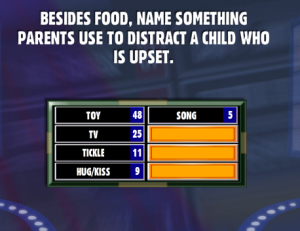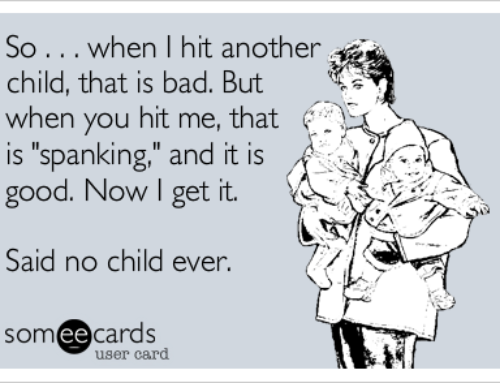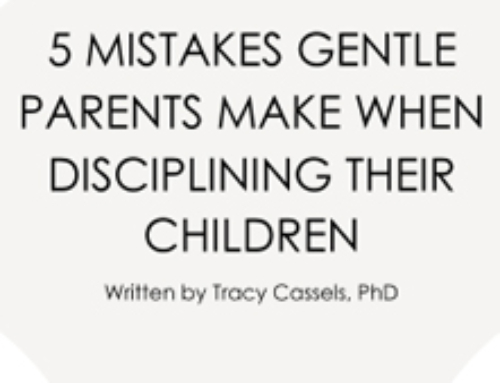 There seems to be a fair bit of confusion over the different methods people use to approach an upset child or baby: Do you distract? Redirect? Respond? Frankly it’s not too surprising as often the terms used are used interchangeably and incorrectly. Here I want to lay out some critical distinctions between what it means to distract, redirect, or respond to a child, what it looks like, and whether or not each method works, according to research.
There seems to be a fair bit of confusion over the different methods people use to approach an upset child or baby: Do you distract? Redirect? Respond? Frankly it’s not too surprising as often the terms used are used interchangeably and incorrectly. Here I want to lay out some critical distinctions between what it means to distract, redirect, or respond to a child, what it looks like, and whether or not each method works, according to research.
Distraction
Distraction is a common tool in our modern society to try and get a baby or child to stop crying or to get children away from a potentially undesirable situation (e.g., if they were about to hit another child). Underlying the use of distraction is often a parental desire to make something stop by any means necessary.
What does it look like? In distraction, the focus is on trying to do something or show the child something that simply gets their mind away from whatever caused the upset (e.g., crying, anger, etc.). So people shake rattles at a crying babies in hopes that it will get their attention or show a child something exciting or feed them a “treat” to get them to stop being sad. Parents, if they notice their child about to engage aggressively with another child, might present a new toy to distract them from their anger. Notably parents do not acknowledge the situation the child is in, but rather try to get the child away from it without ever talking about it.
Does it work? Well, it depends. I believe this gained popularity due to the effect of distraction on pain during medical procedures which has been documented to have a positive effect in reducing the amount of pain children report experiencing Although it works for medical procedures, people also use it for other situations, and the research outside of medical procedures does not support distraction. There isn’t a lot out there, but one study looking at the use of toys to distract 3- and 6-month-old infants found that while toys did distract infants who were distressed due to overstimulation, but as soon as the toys were removed, distress returned to initial levels[3]. Notably, this held across multiple time intervals with the new toys so it did not seem that the distractors were truly eliminating distress. As the authors concluded, it would seem that attention and distress operate separately and although attention can be diverted, distress does not diminish. This would mean distractions are temporary. The other factor to consider is that distraction is one way for adults to avoid looking for or addressing the cause of the distress. It shuts down communication with the child by saying, “I don’t care about what you are telling me. Here, look at this shiny thing.” If we do this to adults, they tend to feel unheard and disrespected and those are two things we probably don’t want our children to feel. Now, sometimes parents end up at their wits’ end and use distraction. It happens and you shouldn’t beat yourself up over it. The issue is how often you use it: Is it a last resort when you’re stressed or is it a go-to response? What I hope is clear here is that outside of medical procedures, it should not be a go-to response. Redirection Redirection is rarely used when a child is upset but rather when a child is “misbehaving”. In general, redirection is a way to move a child’s “undesirable” behaviour towards something more “desirable”. This is distinct from distraction in that it is not moving a child to a totally different activity and it also should include a discussion of why the behaviour is changing. What does it look like? Imagine your child has taken paint and started painting the walls, something you probably don’t want. Whereas distraction would be to put your child in front of the TV or give them another toy, redirection involves moving the task to something more desirable, like painting on paper. However, important to this is also the discussion of why the redirection is happening so children can learn. If you don’t explain that walls are supposed to stay one colour, or that they aren’t an appropriate painting spot, you will end up with your walls painted yet again. Another example is when parents redirect angry behaviour. Imagine your child is angry at a kid and trying to lash out and hit them. Redirection would be to explain that it’s okay to feel angry (validating feelings is hugely important) but that we don’t hit others; however, we can stomp our feet or use words to express how we feel or any other act that is considered acceptable for your family. Again, you have the discussion surrounding the behaviour and then alternatives presented. In short, redirection is about acknowledging the situation, the feelings involved, and providing similar alternatives that will allow the child to continue to express whatever feelings there are (good or bad) while understanding why a change is taking place. Does it work? There isn’t much research on redirection per se, mostly because it seems to be considered a tried-and-true method for parents when dealing with these types of situations (and avoiding any escalation of frustration or anger on behalf of all parties involved). In terms of aggression, the use of Bobo dolls and other toys that allow children to act out in a safe environment are supported by therapists and in turn used regularly in therapy to allow children to safely explore their aggression[4]. Importantly, when redirection involves redirecting away from the desired behaviour/object/feeling entirely (e.g., if a child wants to play with something dangerous), research does show that this is less likely to be followed by the child – even in situations where the risk of injury is high[5]. Therefore, parents should be careful to not try and redirect entirely away. One option would be for parents who have a child interested in, for example, a sharp knife to look at the knife with the child and explain the hazards of playing with it. The interaction may be enough for the child to have his/her curiosity satiated while the presence of an adult limits the danger the child faces with the object. In short, redirection can be incredibly helpful, but it seems limited to situations in which the child is (a) spoken to about the action and (b) redirected to a similar action that does not negate the child’s emotional attraction to whatever act is taking place. Responsiveness I talk a lot about responsiveness on this site because it really is *the* key to attachment status. It’s not breastfeeding for years, bedsharing, or wearing your baby (though they all facilitate the attachment process when it works for baby and mom). It’s the belief that your child is communicating with you and not ignoring their attempts to communicate. What does it look like? This is the impossible question, but one that parents seemingly want a quick answer to. Attachment Parenting, with its 7 B’s attempts to give guidelines that some people parade around as rules, but the fact is that these are tools to facilitate responsiveness, they aren’t even responsiveness per se. Responsiveness will look different in each situation and each household and will be different based on each child. What it is not is permissiveness. In responsiveness, the parent responds to the child’s communication (often crying for babies, but in toddler and preschool years it can be more verbal or action based communication) by respecting the child’s feelings. When a baby or child is distressed, for example, responsiveness is not ignoring them or telling them to be quiet, but rather offering comfort (whatever that looks like). When a toddler is having a tantrum, it is not punishing them for it, but acknowledging the stress they are under, offering support (this is not akin to giving in if the tantrum is about something wanted) while teaching them other means to express themselves once they are calm. It is making an effort to remember that your children have hard times and hard days for seemingly inexplicable reasons and that a lot has to do with their immature neurological development. Keeping this information in mind means we can approach their actions with love, compassion, boundaries (yes, boundaries), and an awareness of what we can and cannot expect from them. One example from my own life: One night my daughter wanted to watch a movie again that we had finished. It was time to start the bedtime routine – she’d been yawning and rubbing eyes at the end of the movie – and so I said “No”. Being tired, she lost it. I remained calm next to her and explained that the answer was still “No” but offered that we could watch some of it the next day too as I saw how much she loved the movie. She continued to be upset. She screamed, she cried, the whole “tantrum” works and I continued to calmly explain that I understood how upset she was and I got how upsetting it is, but the answer is still no. After a few minutes, she calmed down and came over to cuddle. We cuddle, she nursed, and in a calmer state, we agreed she could watch more the next day. I realized the tantrum was brought on by overwhelming feelings of what she wanted coupled with being tired. She was not trying to annoy me or be a “brat” (a term I hate). She was distressed. I did NOT have to give in (that would not have been good for her as she was exhausted) to be responsive. I simply had to acknowledge her feelings as real and valid and be there to offer comfort when she was ready. One final addition to responsiveness that is often overlooked is that we also need to be responsive to ourselves. If you as a parent are having a bad day and feeling stressed, you may not be as responsive as you like in a given moment. You have to take those moments and move beyond them. We are all human and we are not perfect. I have had many moments where I’ve made situations worse by snapping or yelling back when my daughter was upset because I wasn’t in a good place. I have learned to apologize to her and forgive myself at these times and this is what allows me to continue to be responsive down the line. In short, if we’re not responsive to ourselves in distress by cutting ourselves some slack and even asking for help, we cannot be responsive to others. Does it work? Here I can say unequivocally yes. The amount of research on the positive outcomes associated with what we call “responsiveness to distress” is overwhelming. Starting with John Bowlby, followed by Mary Ainsworth, and continued for decades, the research is quite clear that responsiveness to distress is associated with greater empathic development, greater emotional awareness and regulation, better attachment status, greater social competence, fewer behavioural problems, and greater prosocial behaviour (for reviews, see [6][7]). In addition, when parents are responsive to their children outside of distress – such as listening to what they have to say, compromising on requests, responsiveness in play – they also are more likely to have children who cooperate with them, have greater conscience in later childhood, and who are more likely to disclose information (which is essential as kids age) (again, see [7] for a review). Parents just have to remember that responsiveness is not permissiveness and that we can be responsive to our children’s distress (or anger) while still maintaining boundaries. *** There you have it, the breakdown of what it means to distract, redirect, and respond. These terms are not interchangeable, they mean different things, and while distraction can be appropriate in limited settings, redirection is often preferable, and responsiveness is always important. What you choose to do will depend on your situation and what you hope to achieve. [Image Credit: Family Feud]
[1] Kleiber C, Harper DC. Effects of distraction on children’s pain and distress during medical procedures: a meta-analysis. Nursing Research 1999; 48: 44-9. [2] Uman LS, Chambers CT, McGrath PJ, Kisely S. A systematic review of randomized controlled trials examining psychological interventions for needle-related procedural pain and distress in children and adolescents: an abbreviated Cochrane review. Journal of Pediatric Psychology 2008; 33: 842-54. [3] Harman C, Rothbart MK, Posner MI. Distress and attention interactions in early infancy. Motivation and Emotion 1997; 21: 27-43. [4] Trotter K, Eshelman D, Landreth G. A place for Bobo in play therapy. International Journal of Play Therapy 2003; 12: 117-39. [5] Morrongiello BA, Dawber T. Toddlers’ and mothers’ play therapy. International Journal of Play Therapy 2003; 12: 117-39.behaviors in an injury-risk situation: implications for sex differences in childhood injuries. Journal of Applied Developmental Psychology 1998; 19: 625-39. [6] Grusec JE, Davidov M. Integrating different perspectives on socialization theory and research: a domain-specific approach. Child Development 2010; 81: 687-709. [7] Grusec JE. Socialization processes in the family: social and emotional development. Annual Reviews in Psychology 2011; 62: 243-69.






[…] How we respond to our children in this moment (and there’s another blog post on this coming very soon regarding social media) can be a valuable learning tool and has longer term implications. My experience reminded me of an excellent recent post on Evolutionary Parenting I had recently read on Distraction, Redirection and Responsiveness. […]
Wonderful article! I just love this site, thank you!
[…] According to a very well sourced, documented, and written post on Evolutionary Parenting by Tracey Cassels PhD distraction is not the method I believed it was! I was under the impression […]
[…] to a very well sourced, documented, and written post on Evolutionary Parenting by Tracey Cassels PhD distraction is not the method I believed it was! I was under the impression […]
[…] teach bite inhibition to your Labrador puppy, try using the “Ouch” method, redirection and distraction techniques, as well as positive […]